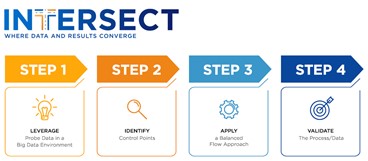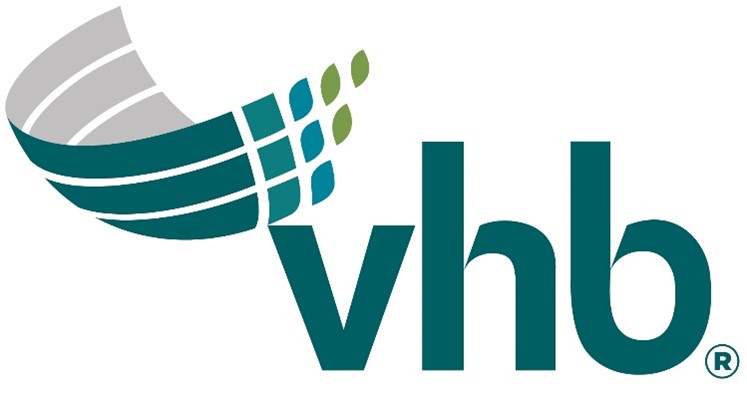The information contained in this article is not intended as legal advice and may no longer be accurate due to changes in the law. Consult NHMA's legal services or your municipal attorney.
Collecting traffic data is a critical piece of advancing transportation projects. For municipalities and state agencies, like every other market sector, the COVID-19 pandemic forever altered how infrastructure projects move forward. In New Hampshire and throughout the east coast, VHB engineers and transportation planners recognized a need to capture accurate traffic data to help their clients during these unprecedented times. The result: Intersect, VHB’s latest technology-driven innovation, which revolutionizes how to account for traffic volumes at urban, suburban, or rural intersections during typical and atypical circumstances.
Intersect uses an innovative approach to determining traffic volume data at intersections, enabling time-sensitive projects to progress. In some cases, a tool like Intersect may be the only option to capture historical data. VHB is working in partnership with multiple Departments of Transportation, including NHDOT, to implement Intersect and leverage the efficiency and accuracy of collecting traffic counts using probe data.
The Road Less Travelled
In March 2020, the United States and the world faced unknown challenges resulting from the COVID-19 pandemic. Everyday life became disrupted and the country began a series of coordinated social distancing and stay-at-home orders. As government officials instructed the country to remain at home, and many businesses and citizens began a transition to working remotely, transportation systems were directly impacted. Traffic volumes were significantly reduced, in some cases by greater than 75 percent on major facilities that previously served as the lifeline to residences, business, and communities.
With non-representative traffic conditions on the roadways, transportation professionals providing essential services supporting infrastructure needs were left with a new predicament—how to collect volume data for analysis of future projects when traffic conditions are atypical.
Recognizing the value of probe (cellular, sensor, and/or connected vehicle) data, VHB outlined a universally acceptable procedure for leveraging probe data to produce traffic volumes under normal (pre-COVID-19) conditions. Although the procedure was developed during a time of crisis, Intersect will forever change the way intersection data is collected.
Why is Traffic Volume Data Important?
Traffic volume data serves multiple needs for transportation professionals and is vital to establishing the baseline conditions for roadways and intersections. As transportation planners, we rely on traffic counts to support traffic impact studies, long-range transportation plans, corridor studies, travel demand forecasting, and signal warrant studies for our municipal, agency, or institutional clients.
These studies are largely developed based on the collection of existing traffic counts to establish the conditions for roadways and/or intersections.
Additionally, our traffic engineers leverage volume data to assess near real-time operating conditions on corridors and/or intersections. These assessments are critical to help us identify operational constraints, assess safety conditions, and support the maintenance of these facilities.
Traditional Traffic Data Collection
Traditional traffic data collection techniques include the use of automatic traffic recorders, manual turning movement counts, and video detection devices to quantify the number of vehicles on highways or at an intersection. Depending on the need, we collect traffic counts for a minimum of one hour or extended periods of time using continuous counters. In addition, agencies often restrict the collection of traffic counts to traditional times of year such as non-holidays and months when schools are in session. This approach can create the potential for project delays if weeks or months pass before we can collect a count.
Traditional standard operating guidelines for conducting traffic counts include:
- Weekday traffic counts are collected between noon on Monday and noon on Friday.
- Traffic counts avoid collection on holidays plus a day before/after the holiday—unless the collection of a holiday is the purpose of the study.
- Traffic counts avoid conducting counts in or within the area of influence of construction zones—unless it is the purpose of the study.
- Traffic counts avoid collection during non-recurring traffic conditions such as accidents, inclement weather, or special events.
As there are a significant number of transportation applications that use traffic counts, it is important to know that a wide range of collection periods or procedures are available. Having the flexibility to collect traffic counts using probe data for any duration, date, or period provides significant advantages.
In addition, using probe data enables us to explore traffic conditions before, during, or after the impacts of COVID-19. For the “before” condition, probe data is available for dates prior to March 2020. Likewise, probe data is currently being collected during the pandemic to monitor the near real-time conditions on transportation systems. We anticipate that “after” the pandemic, use of probe data will, in some cases, potentially replace the traditional traffic-counting process.
Evolution of Probe Data
Transportation-related probe data has evolved over the past decade. Available information from probe data sources has become functionally more complex as the saturation of data-providing devices and the speed at which this data is made available has greatly expanded, with a majority of these data sources now reporting latencies less than one minute or near real-time. This expansion has seen data become readily available to agencies for use in operational needs and has enhanced opportunities for planning-level analysis. Information can now be collected from the convenience of your desk 24-hours a day, 7 days a week, and 365 days a year.
While there are many sources of probe data in the market, VHB partnered with INRIX to support the development of turning movement volumes based on the easily manipulated discrete data, ability to conflate for accuracy to roadway infrastructure, and flexibility to isolate vehicle classifications (personal vehicles and commercial vehicles).
Probe data generally has a capture rate of 10 to 25 percent of the total number of vehicles passing through an intersection depending on the nature of the surrounding area. Estimating what reasonably “normal” volumes are at a study intersection from a smaller sample size is challenging. Intersect provides that solution by thoroughly understanding capture rates.
Innovative Four-Step Process
Intersect follows an innovative four-step process, shown in the figure, that begins with probe data collected from cell phones and connected vehicle technology to develop intersection traffic volumes—a vital necessity for any transportation planning effort.

Moving Important Projects Forward
Municipalities, DOTs, and institutions along the east coast have addressed transportation planning challenges using Intersect to revolutionize the way they account for traffic volumes at urban, suburban, and rural intersections during typical and atypical conditions. By capturing important data, we have helped move projects forward, including:
- NHDOT. With the aid of Intersect, VHB’s local Bedford office will be working with NHDOT to establish pre-COVID fall 2019 data for turning movements at up to 51 signalized intersections throughout the state to establish peak-hour traffic demands to be used in optimizing signal timings to service post-pandemic traffic.
- University of Southern Maine, Portland. To accommodate a new residence hall and student center, VHB conducted a traffic analysis to illustrate the project impacts and meet local and MaineDOT permitting requirements. With most student learning moving to online and off-campus due to the COVID-19 pandemic, the necessary representative traffic data for the year was unavailable. With Intersect, we were able to develop traffic volume data for key locations near the University where historic data wasn’t available, which was significant enough to enable the project to receive permits in Fall 2020 and stay on schedule.
- Loudoun County, VA, Planning Study. Using Intersect, VHB obtained traffic analysis data to develop representative existing conditions, allowing a corridor study to proceed without significant delays. Intersect’s probe-data integrated a data validation and verification process that used multiple available traditional counts along the study corridor during the targeted analysis period. Ultimately, VHB developed the traffic data needed for the calibration of the existing condition VISSIM model, originally scoped to be collected manually, using Intersect. With probe data collected over extended durations—a minimum of six weeks—the level of accuracy in capturing average travel behavior was greater when compared to the traditional manual counts that represented a snapshot in time for one, or a typical, weekday for the specified number of hours being counted.
- Intersect is generating data for the NCDOT’s Peak Average Daily Traffic (PADT) project to understand seasonal traffic factors for 93 locations in North Carolina. These factors are applied to the Average Annual Daily Traffic data to obtain the peak daily traffic volumes on roadways. In turn, this data is used for calculating Volume to Capacity ratios for identifying project prioritizations. With the Intersect methodology, VHB will develop a model, including data from continuous count stations, to generate the PADT Factor for these locations, and up to 99,000 additional locations in the state.
Traffic counts are a critical piece of advancing transportation efforts, and often where a project begins. Intersect provides the flexibility to use big data and revolutionizes the way we account for traffic volumes.
For more information on Intersect, contact Amir Rizavi, Director of Transportation Systems- VHB NY, at ARizavi@VHB.com.
